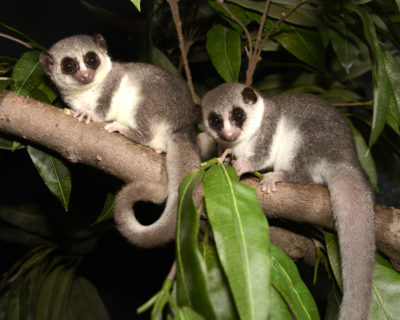
What We Do
The Behavioral Ecology and Sociobiology Unit of the German Primate Center has been operating a field station in Kirindy Forest/CNFEREF near Morondava since 1993. We study the behavior, ecology and biodiversity of lemurs, but also of other vertebrates at our study site in Madagascar.
About the DPZ Field Station
The DPZ field station is principally available for external users, but members of the DPZ and students of the University of Göttingen have priority of access to the limited number of available slots. Interested external users will be accommodated on a first-come, first-serve basis; projects dealing with botanical questions or animals other than mammals will be given priority.
Interested parties should communicate their interest in working in Kirindy at least 6 months ahead of time to Prof. Dr. Peter Kappeler.
What Lemur Species We Study

We are studying the behavior and ecology of 8 sympatric lemur species at Kirindy:
- Verreaux’s Sifaka (Propithecus verreauxi)
- Red-fronted Lemur (Eulemur rufifrons)
- Red-tailed Sportive Lemur (Lepilemur ruficaudatus)
- Pale Fork-marked Lemur (Phaner pallescens)
- Fat-tailed Dwarf Lemur (Cheirogaleus medius)
- Coquerel’s Giant Mouse Lemur (Mirza coquereli)
- Gray Mouse Lemur (Microcebus murinus)
- Madame Berthe’s Mouse Lemur (Microcebus berthae)
Research
- Climate Change Threatens Lemurs on Madagascar, March 28, 2023
- Sex roles in the animal kingdom are driven by the ratio of females to males, November 30, 2022
Video on DW News
Professor Peter Kappeler from the German Primate Center and his team conduct research into the primates in the Kirindy reserve. The scientists are also looking into the behavioral patterns of the lemurs to see what impact the changes are having.
